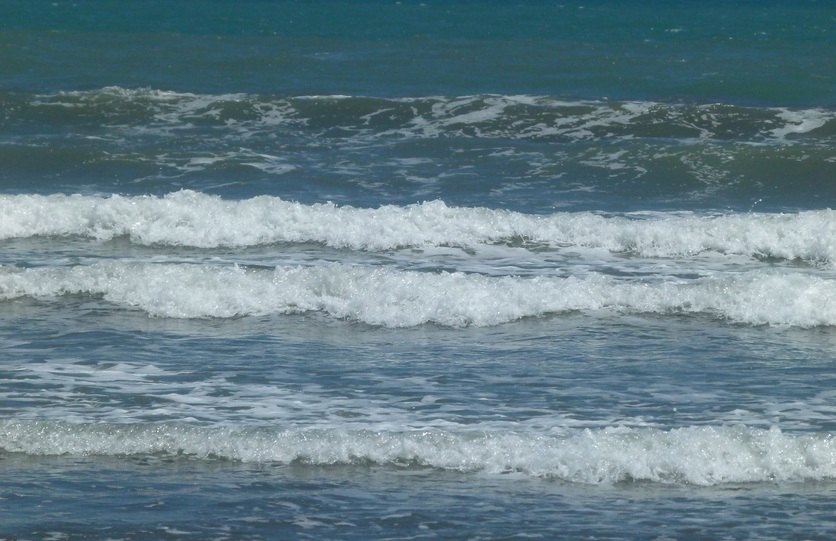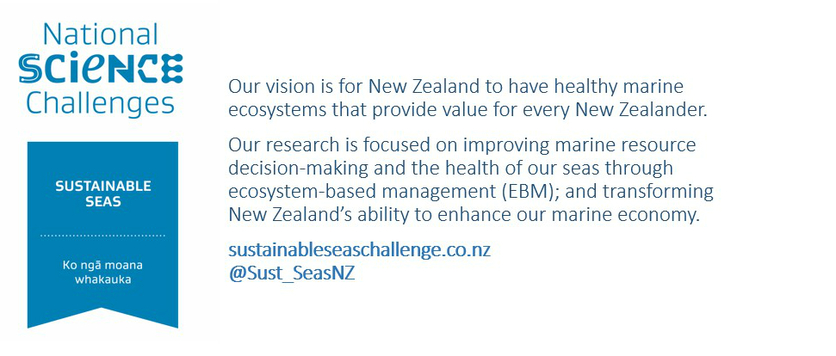When we throw something away, how do we know where it goes? The Sustainable Seas National Science Challenge developed an online tool to help us find out. Ocean Plastic Simulator is an interactive computer tool that shows where plastic is likely to end up when it is dropped in the ocean.
Connectivity in New Zealand’s marine communities
The simulation shows how the sea and the coasts are connected by ocean movements such as tides, winds and currents.
Users choose a spot anywhere along the New Zealand coastline and drop virtual plastic into the water. The simulation tracks the movement of up to 30 pieces of plastic for 30 days or until they are all beached. It shows where and when the plastic reaches coastal beaches or mudflats or if ocean movements carry it out into the sea. You can click on individual pieces to see how far they’ve travelled and their average speed.
Supporting information
Ocean Plastic Simulator includes an interactive panel with information about:
- Plastic oceans – the plastic problem globally and locally.
- Moana – the deep connection Māori have with the natural world including whakataukī (proverbs), legends and kaitiakitanga practices.
- Model – the computer modelling behind the simulation.
A closer look at the models
One way to study coastal dynamics is by dropping items – similar to Argo floats – in the water and using satellites to observe where they go. This option requires a lot of resources. Another option is to create a computer model. This is still a very complex operation, but instead of using boats and satellites, the model uses data and mathematics.
The hydrodynamic models – provided by the National Institute of Water and Atmospheric Research (NIWA), Cawthron Institute, Oranga Taiao Oranga Tāngata and MetOcean Solutions – are created by turning the coastal areas into a grid of triangles. Each triangle has information about the way the water moves (tides, currents and wind) and other variables (such as temperature and salinity). The triangles, which represent distances of 20 m near the shore and up to 20 km offshore, are interconnected to show the water flows from one triangle to the next. The models include a random step to account for turbulence or additional eddies that occur in the ocean. If you’ve ever stood in the waves or peered over the side of a boat, you will be aware of how tumultuous the water can be!
The virtual plastic particles ‘released’ into the water represent macroplastics that are the size of a water bottle. They float 3 m beneath the water’s surface. It would require a much more technical model to track microplastics because of their size and how they move through the water profile.
Engaging with science
Ocean Plastic Simulator is one of a number of tools created as part of the Sustainable Seas National Science Challenge. The Challenge is developing tools, technologies and guidance to support an ecosystem-based way of managing the environment. An interactive tool like the Ocean Plastic Simulator was designed to help educate people about the issues rising from plastic waste. It’s also a way of showcasing Sustainable Seas research and data gathering, and presenting it in an engaging format.
More than just a computer simulation
Heni Unwin, a Kairangahau (researcher) at Cawthron Institute, has trialled the Ocean Plastic Simulator with schools around Aotearoa. The student feedback has helped Heni and Cawthron Institute Team Leader Ross Vennell improve its function and design.
Heni and Ross Vennell shared the tool as part of a LEARNZ virtual field trip in March 2019.
Nature of science
Scientists use models as a way of representing phenomena. Models are often used for ethical reasons. It would not be acceptable to drop plastic bottles in the sea to see where they travel as some bottles would be lost and add to the pollution problem.
Related content
Oceans of rubbish provides insight into the breadth of the pollution problem in our seas.
Read the Connected article Down the drain to see how students in Petone, Lower Hutt, took action to prevent rubbish from entering their local marine environment.
The article Climate models explains how scientific models are built and tested.
Pollution from Rena details the spread of debris from the cargo ship Rena. The ship was grounded off the Tauranga coast in 2011.
Plastic is a wicked problem. It’s incredibly useful, but it’s also a huge environmental issue. A helpful resource is Thinking about plastic – planning pathways which includes our interactive planning pathway – use this to begin a cross-curricular look at plastics.
New Zealand science organisations Royal Society Te Apārangi and the Office of the Prime Minister’s Chief Science Advisor have created reports and resources to help us rethink plastic.
Related activities
Plastic – reuse, recycle or rubbish game encourages students to observe and consider how they use and reuse plastics in their everyday lives.
What happens to our plastic bottles? tracks a plastic bottle as it is transformed from a waste product to a new food-grade package. This activity is suitable for lower to mid-primary students.
Citizen science projects
Mizuiku Upstream Battle – run by Keep New Zealand Beautiful aims to collect and audit litter at key upstream sites such as rivers, lakes and streams to help provide a better understanding of the root causes of ocean pollution.
Litter Intelligence – a long term programme run by Sustainable Coastlines aiming to create a grassroots solution to beach litter in New Zealand.
Litterati – an international project that allows participants to photograph, upload and tag litter in their own area.
Useful links
Heni Unwin and Ross Vennell provide more detailed information about the interactive computer model they've developed in this Sustainable Seas webinar.
Although the Sustainable Seas Challenge finished in June 2024, the Challenge lives on via a new website – Tohorā. Tohorā also has resources for teachers – with a focus on geography and social sciences.
Check out Cawthron's Ocean Plastic Simulator.
The Sustainable Seas Challenge has created a set of cards that introduce key elements of kaitiakitanga. The 11 Hui-te-ana-nui: Kaitiakitanga cards are available to download here. If you would like hard copies of the cards please contact sustainableseasNC@niwa.co.nz. Sustainable Seas notes that the content included in the summaries remain under the guardianship of the original knowledge sources.
Acknowledgement
This article has been developed using resources from the Sustainable Seas National Science Challenge


